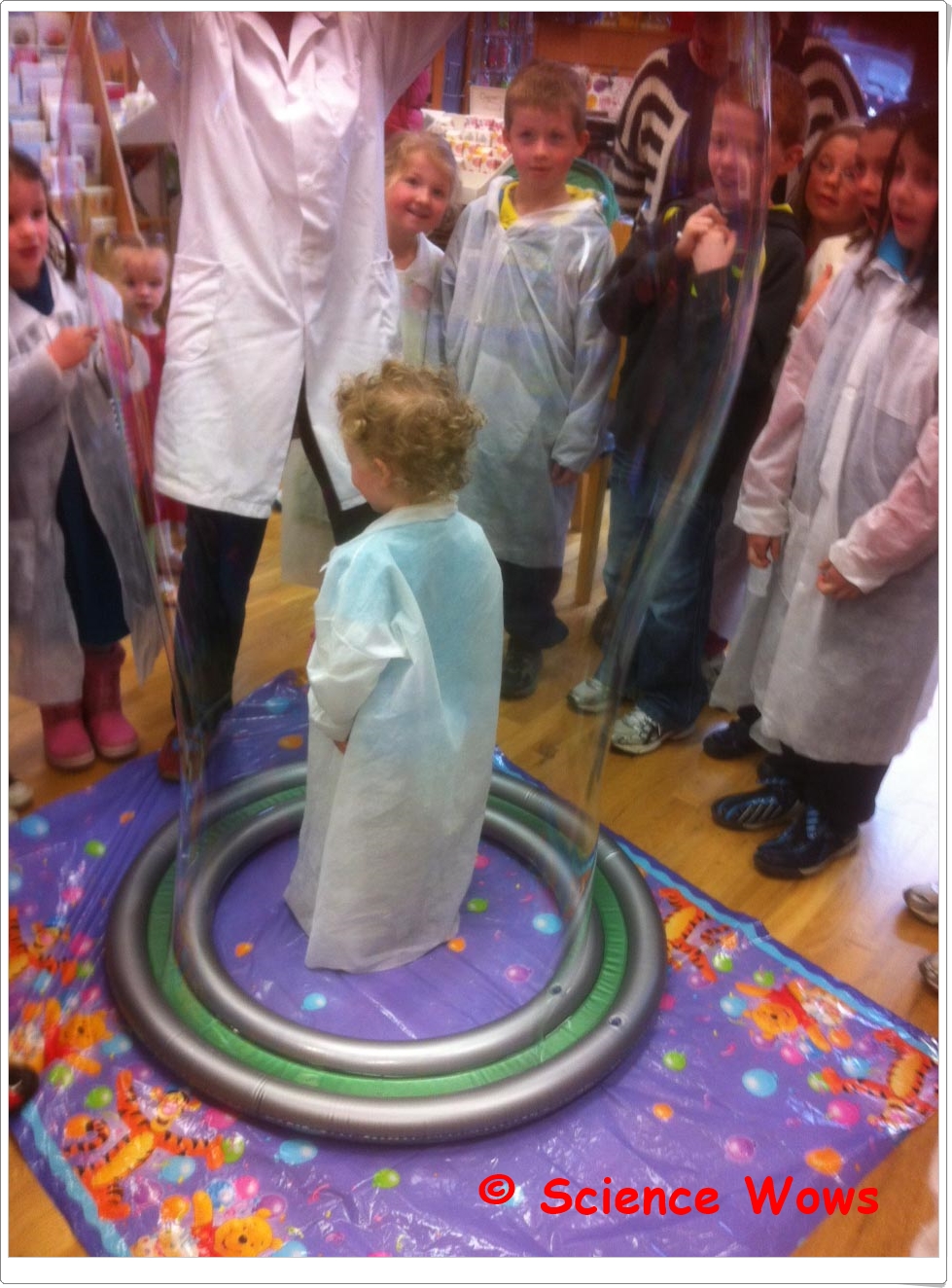WHAT IS A BUBBLE?
A bubble is a thin film of liquid filled with air or another gas. Most bubble are made up of soapy water and air.
LET’S LEARN MORE…
No matter what shape a bubble starts off as, it will always try to form a round shape (called a sphere). A sphere is the shape that allows the least amount of surface area – and therefore the least amount of energy is needed to maintain this shape.
If one or more bubbles touch they will loose their sphere shape – the walls of the touching bubbles will merge. If both bubbles are the same size the shared wall will be flat!
The walls of joined-up bubbles always meet at an angle of 120 degrees
 |
| photo credit: kaibara87 via photopin cc |
 |
| photo credit: Jeff Kubina via photopin cc |
WHAT COLOUR IS A BUBBLE?
Bubbles reflect colours from their surroundings so at first they may appear rainbow coloured.
HOW DOES IT WORK?
Did you know… The skin of a bubble is less than one thousandth of a millimetre thick!
EXPERIMENTS TO TRY AT HOME
Make your own bubble solution!
So now what?… Now start making bubbles!! If you don‛t have any bubble wands you can make your own using some pipe cleaners. Try shaping the pipe cleaners into different shapes and see how the bubble will still always end up as a sphere shape.
Did you know… The biggest free- floating soap bubble ever blown was 105.4 cubic feet. It could have held 788 gallons of water!
If you really want to scale it up make extra bubble solution and us a small paddling pool and a hoola hoop to make some mega bubbles!
 |
| This is a photo of my son in a big bubble made using a commercial bubble ring |
Did you know… The world record for the most people inside a bubble was set in 2006 by Sam Heath; His bubble contained 19 girls and boys over five feet tall!!
BUBBLE ART:
You will need.. bubble solution, food colouring, plastic cup, a straw, paper.
What to do: Pour bubble solution into the plastic cup until the cup is about one third full. Add two tablespoons of food colouring to the bubble solution and mix it well. Place the straw into the bubble solution and keep blowing until the bubbles are coming out of the pot.
You can repeat the process using different colours of food colouring!
ENJOY!





